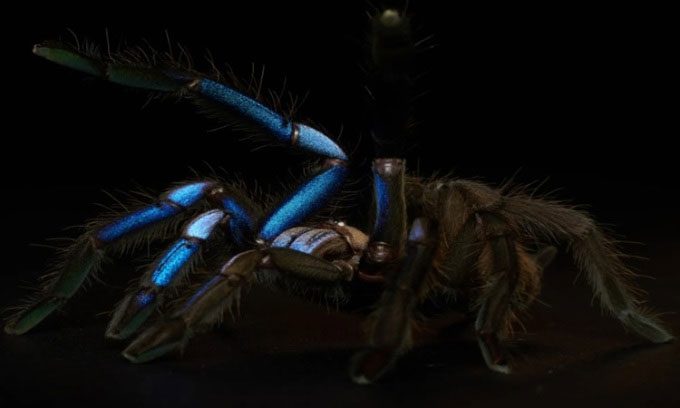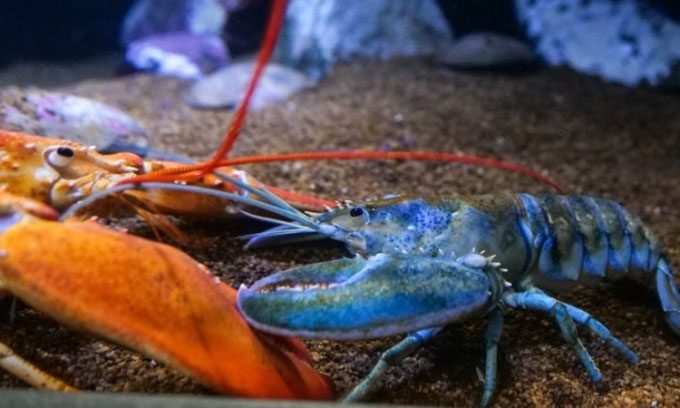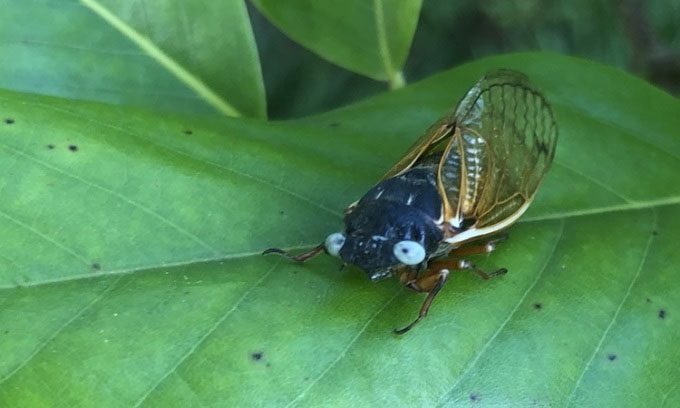Some animal species can exhibit a unique blue color due to genetic mutations or special structures on their bodies.
Blue blood is extremely rare in plants and wild animals. According to scientists from the University of Adelaide, Australia, one reason for this rarity is that the color blue or blue pigment does not actually exist in nature. Organisms that appear blue must absorb very little energy while reflecting high-energy blue light. Since the process of incorporating such energy-absorbing molecules is complex, blue is less common than other colors in nature. However, some animals can display blue hues through specific adaptations, as reported by Popular Science.
1. Tarantula Spider

Blue tarantula spider. (Photo: Yuranan Nanthaisong)
In 2023, a team of scientists in Thailand discovered the electric blue tarantula (Chilobrachys natanicharum). These spiders inhabit diverse environments, including trees, mangrove holes, and underground burrows. The unique coloration of this spider species comes from the special structure of its hairs, rather than the presence of blue pigment. Their hairs have a nano-structure that manipulates light hitting them, mimicking the characteristic blue color. These hairs can also shift to a purple tone depending on the available light, creating a shimmering effect.
2. Lobsters

One blue lobster in two million. (Photo: New England Aquarium).
According to the New England Aquarium, only about 1 in 2 million lobsters is blue. In May 2024, a fisherman in southern England found a blue lobster caught in a trap. Instead of ending up on a dinner plate, it was donated to a local aquarium. Blue lobsters have also been reported in Marblehead, Massachusetts, and in France. According to Andrew Hebda, a former zoological manager at the Natural History Museum, the blue color of lobsters results from a genetic mutation.
3. Cicadas

Rare blue-eyed cicada. (Photo: People).
Also in May 2024, a family in the suburbs of Chicago discovered a cicada (Magicicada cassin) with blue eyes instead of the typical red found in this species. This special eye color is due to a genetic mutation that occurs in 1 out of every 1 million individuals. The blue-eyed cicada has a similarly short lifespan as its counterparts. It has been added to the insect collection at the Field Museum, where scientists will study it. The museum’s team of experts aims to sequence its DNA to understand the genes behind its distinctive eye color.



















































